#Cheyenne tribe
Text
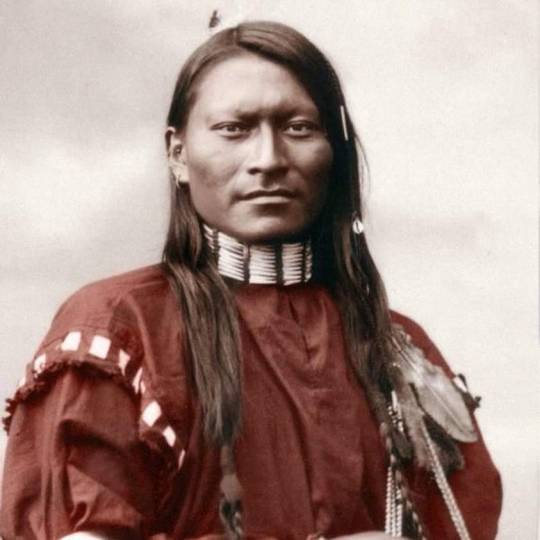
Red Armed Panther, also known as Red Sleeve, was a Northern Cheyenne scout at Fort Keogh in the late 1870s. He was also known as Red Around the Mouth and Bloody Arm ...
Red Armed Panther was a distinguished warrior, hunter, and scout who actively participated in Chief Little Wolf's trail back to the homeland ... There is also a painting by Byron Buchanan titled "Red Armed Panther of the Cheyenne Tribe".
18 notes
·
View notes
Text
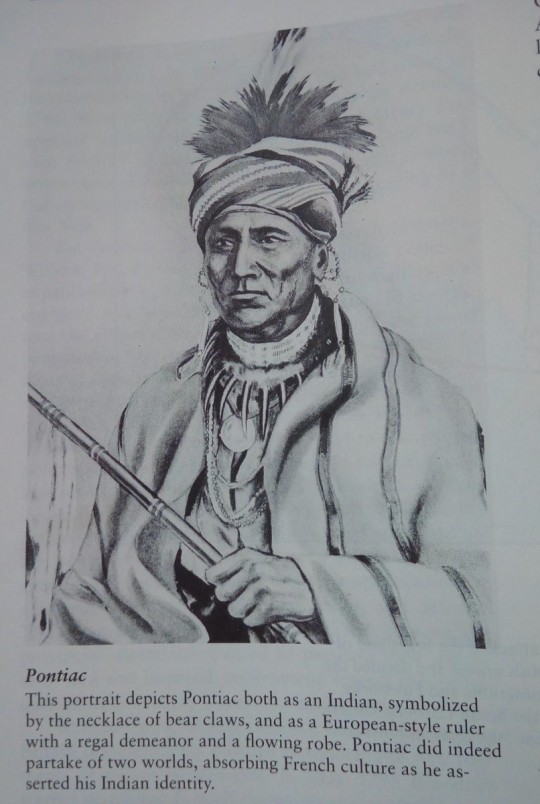
Notes from National Geographic 'Atlas of Indian Nations', p. :
Notable cases of multi-tribal resistance:
The Ottawa chief Pontiac brought more than a dozen tribes together in 1763 and together they burnt down nine of eleven British forts.
Tecumseh was a Shawnee Chief who also brought tribes together to fight the European settlers, but he lost his life in battle.
In the Plains, the Lakota, Cheyenne and Arapho often worked together against American invasion.
The Apache fought alone.
Resistance rarely did anything than buy a little time before the inevitable engulfment of European expansion.
#Pontiac#Ottawa tribe#Native American#European settlers#European colonisation#Tecumseh#Shawnee tribe#Lakota tribe#Apache tribe#Cheyenne tribe#Arapho tribe#tribal resistance
5 notes
·
View notes
Text

Letters To The Editor Policy:
The West River Eagle welcomes letters up to 250 words. Letters to the editor are limited to one per month per person.
Profanity, name-calling, or personal attacks will not be published, nor will letters deemed to be in poor taste. Libelous or slanderous statements will also not be published.
Letters to the editor must be clear, accurate, and signed by the author. For verification purposes, letters to the editor must include full name, home address, and day and evening phone numbers. Contact information is for our purposes only – we will not share it with anyone else. Anonymous letters and letters written under a pseudonym will not be printed.
Letters may be edited for length, grammar, and accuracy. Letters will be published on a space-available basis, and there are no guarantees they will be published the week they are submitted.
The West River Eagle will not accept letters to or about political candidates 30 days before an election.
*Letters to the editor are not the views of the West River Eagle staff – they are solely the opinions of the author.
To submit a letter to the editor, send an email to [email protected]
Events, businesses, and human individuals or groups can be submitted with relevant story and contact information to [email protected] as well.
DISPLAY ADVERTISING DEADLINE: 12:00 NOON Monday
LEGAL ADVERTISING DEADLINE: 5:00 p.m. Friday
#westrivereagle #oglalalakota #lakota #cheyenneriversiouxtribe #cheyenneriver #eaglebutte #southdakota
#cheyenne river#eagle butte#oglala lakota#south dakota#westrivereagle#lakota#cheyenne river sioux tribe
2 notes
·
View notes
Text
Charles Smith feels very Shoshone.
#[ out of character. ] just a shitpost#[ I have no canon grounds or thoughts to it ]#[ it’s just when I look at Charles and think of his native side ]#[ the Shoshone tribe just comes to mind ]#[ that or Cheyenne ]#[ our tribal relatives ]#[ again no canon grounds just my indigenous senses ]
8 notes
·
View notes
Text
Since ppl seem to keep spreading misinformation & using the wrong terms on here, here's a chart:
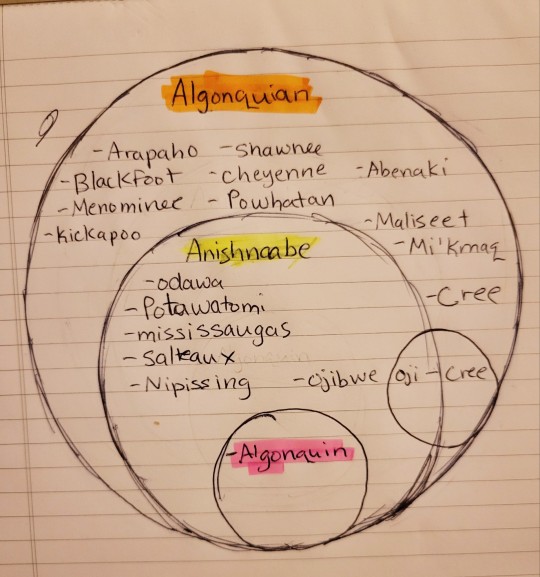
[Image description: photo of a venn diagram drawn on lined paper. There are 3 circles. The largest is labeled "Algonquian" & highlighted in orange marker, with the following languages written inside of it but not inside the other circles: "Arapaho, Blackfoot, Menominee, Kickapoo, Shawnee, Cheyenne, Powhatan, Abenaki, Maliseet, Mi'kmaq". The second, medium sized circle sits within the largest circle & is labeled "Anishnaabe" & highlighted in bright yellow, with the languages "Odawa, Potawatomi, Mississaugas, Salteaux, Nippising, & Ojibwe" written inside the second circle". The language "Oji-Cree" is labeled inside its own small circle intersecting with the Algonquian & Anishnaabe circle. Finally, the smallest circle is at the bottom & is inside the se one largest circle which is also inside the Algonquian circle. The smallest circle is labeled "Algonquin" & highlighted in pink. End description]
"Algonquian", ending with an "-uian", is a language family, with multiple languages & tribes that fall under it. The languages listed here is not exhaustive, & there are more Algonquian languages than listed here.
"Anishnaabe" is a group of culturally related tribes that lived near the Great Lakes region & were allied with each other, and all happen to fall under the Algonquian language family. Anishnaabe does not only exclusively refer to the Ojibwe tribe or language, though they often use this to refer to themselves. Not all Algonquian tribes fall under the "Anishnaabe" group, such as the Cree (except in the case of Oji-Crees), or Blackfoot.
"Algonquin", ending with just "-uin", is a singular tribe and language that is both in the Algonquian language family, as well as a part of the Anishnaabe language group.
2K notes
·
View notes
Text
Indigenous People's Day

DR. HENRIETTA MANN
Cheyenne
On this Indigenous People’s Day, we are featuring Matika Wilbur’s recent publication Project 562: Changing the Way We See Native America, published by Ten Speed Press in 2023. Wilbur (b. 1984) is a visual storyteller and member of the Swinomish and Tulalip peoples of coastal Washington. She holds a degree from the Brooks Institute of Photography alongside a teaching certificate that has shaped her style of educating through narrative portraits.
Project 562: Changing the Way We See Native America, a book born from a documentary project of the same name, resolves to share contemporary Native issues and culture. In 2012 Wilbur set out from Seattle to visit and photograph all 562 plus Native American sovereign territories in the United States.
Wilbur’s engagement with the communities she visited resulted in the creation of hundreds of dynamic portraits and documentation of conversations about “tribal sovereignty, self-determination, wellness, recovery from historical trauma, decolonization of the mind, and revitalization of culture.” She refers to her portraiture approach as “an indigenous photography method” that includes several hours and sometimes days of interaction with the participants, an exchange of energy and gifts, and asking sitters to choose their portrait location. The outcome is a stunning collection of Native narratives and portraits.
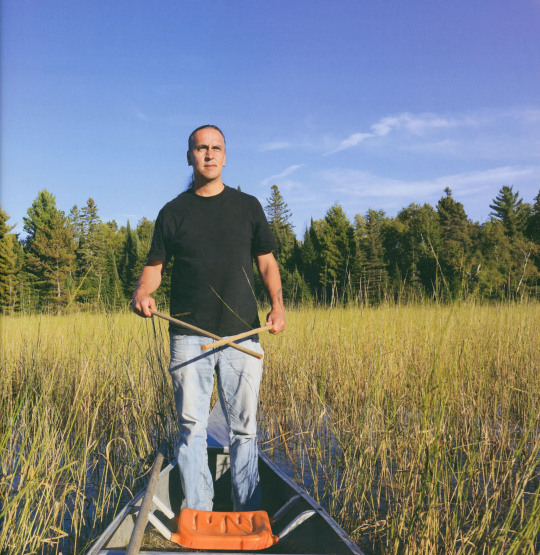
GREG BISKAKONE JOHNSON
Lac Du Flambeau Band of Lake Superior Chippewa Indians
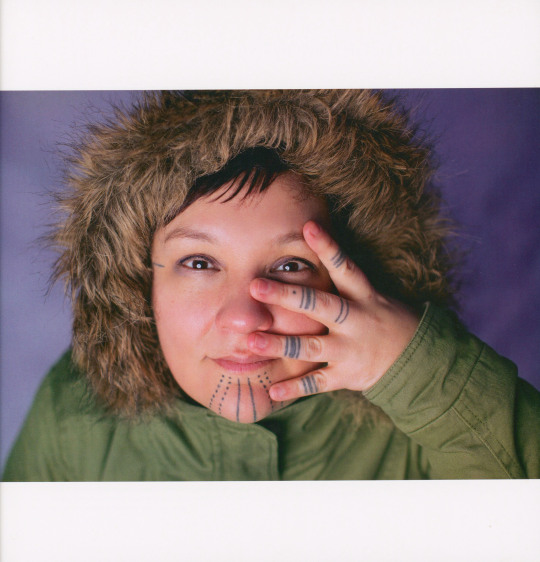
HOLLY MITITQUQ NORDLUM
Iñupiaq
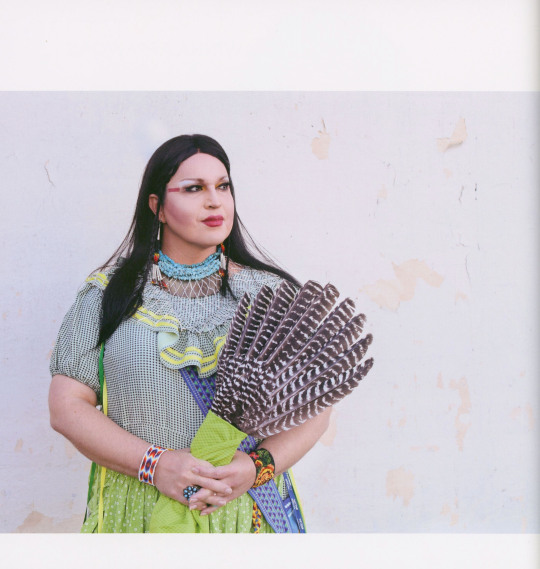
J. MIKO THOMAS
Chickasaw Nation

MOIRA REDCORN
Osage, Caddo

HELENA and PRESTON ARROW-WEED
Taos Pueblo/Kwaatsaan, Kamia
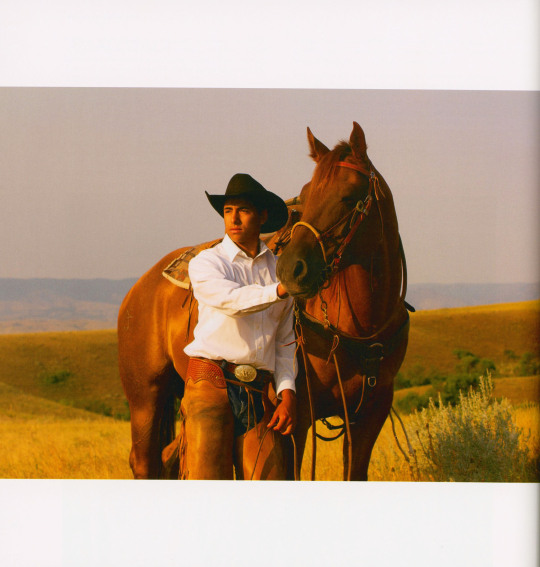
STEPHEN YELLOWTAIL
Apsáalooke (Crow Nation)
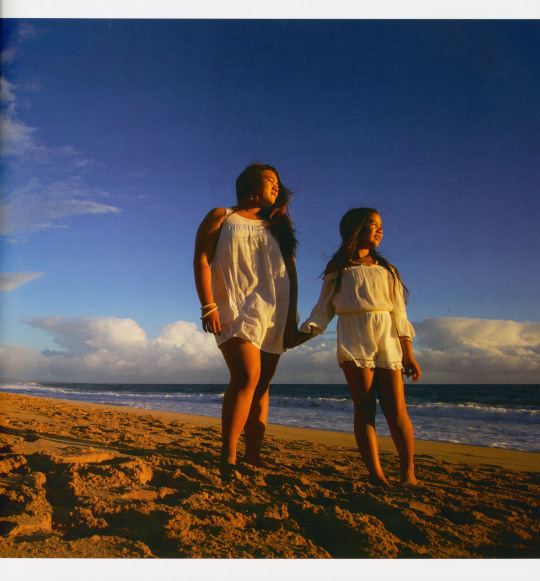
LEI'OHU and LA'AKEA CHUN
Kānaka Maoli
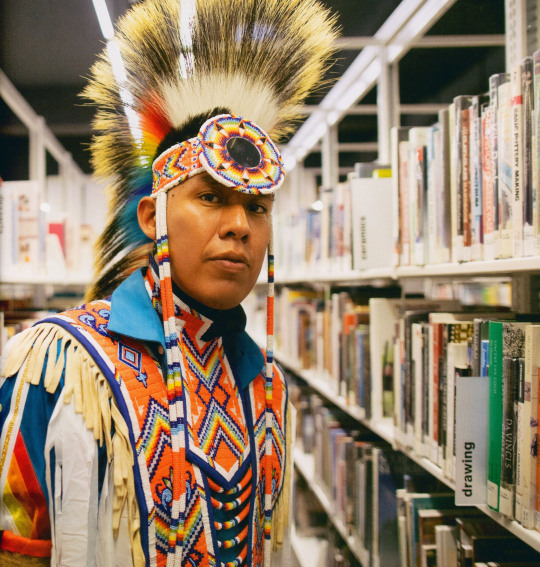
ORLANDO BEGAY
Diné
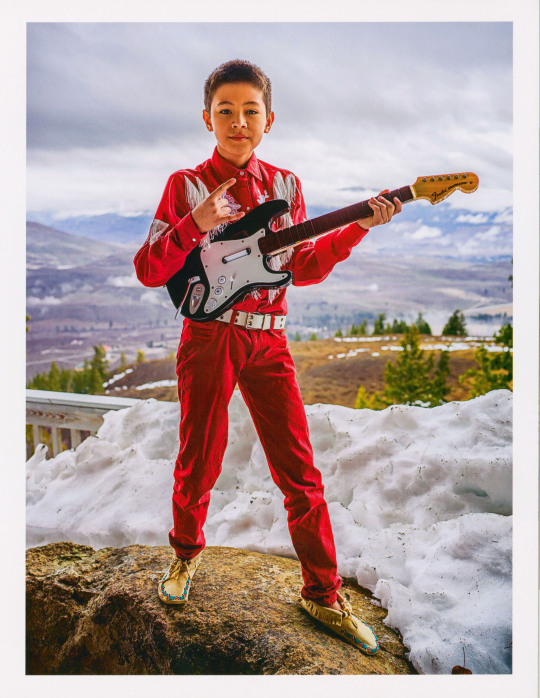
KALE NISSEN
Colville Tribes
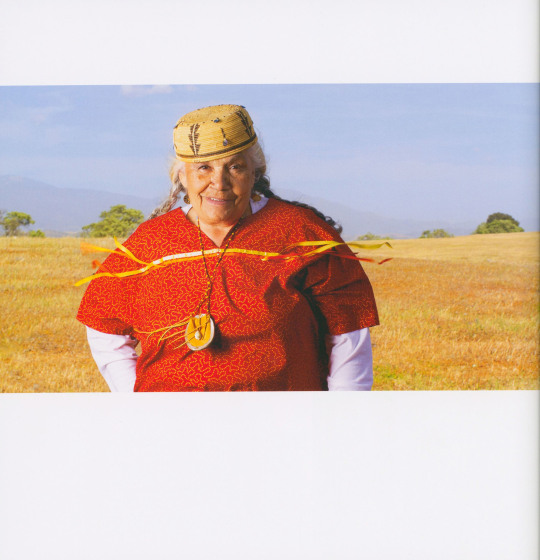
GRACE ROMERO PACHECO
Santa Ynez Band of Chumash Indians
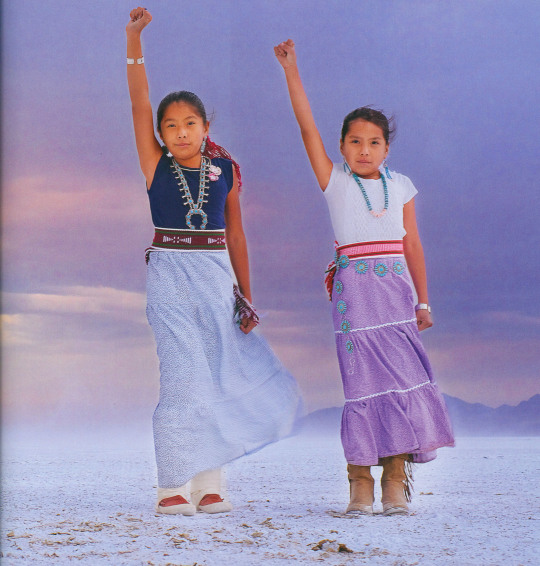
ISABELLA and ALYSSA KLAIN
Diné
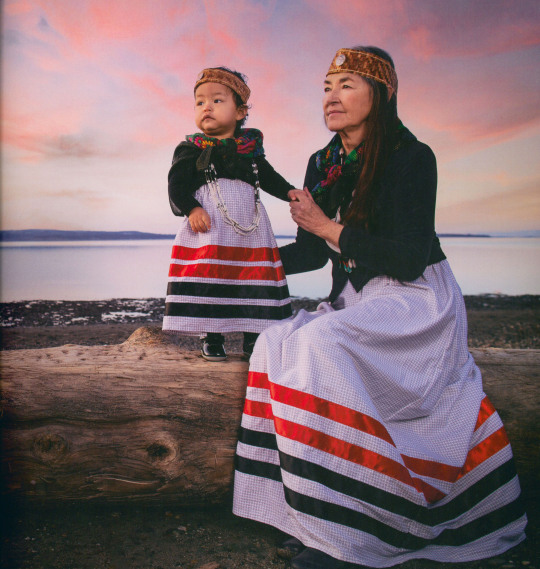
NANCY WILBUR
Swinomish
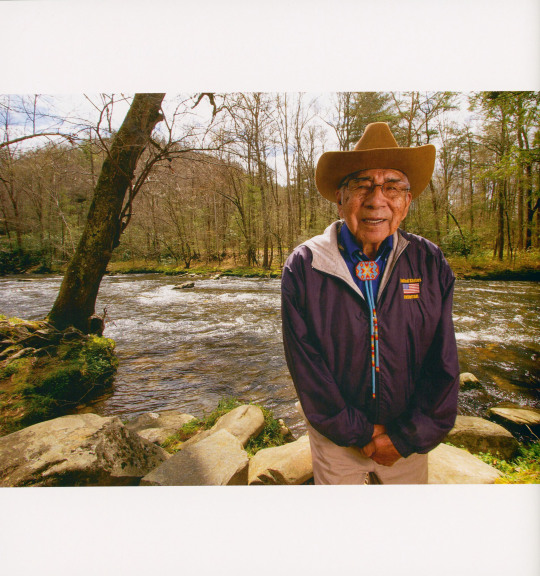
DR. JEREMIAH "JERRY" WOLFE
Eastern Band of Cherokee Indians
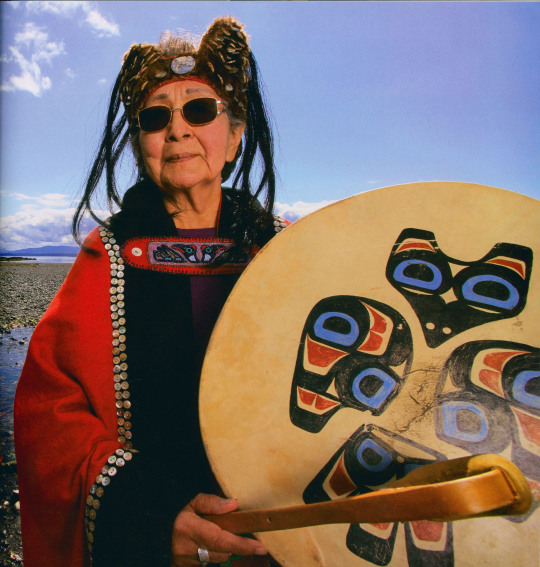
RUTH DEMMERT
Tlingit
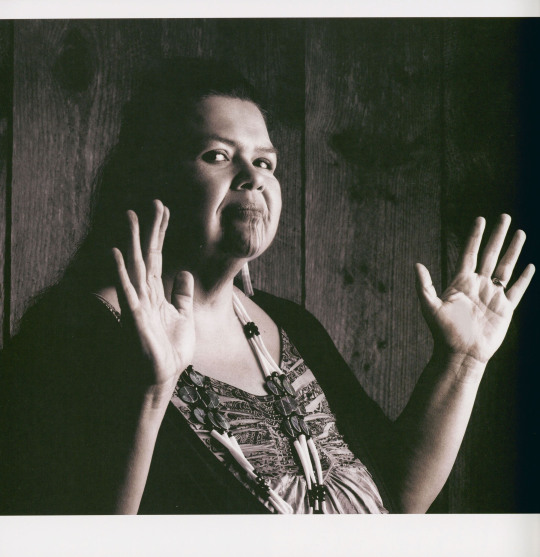
MARVA SII~XUUTESNA JONES
Tolowa Dee-Ni' Nation, Yurok, Karuk, Wintu
Matika Wilbur will be speaking on UW-Milwaukee's campus Thursday, November 16 from 6-7p.m. in conjunction with her exhibition Seeds of Culture: The Portraits and Voices of Native American Women on view at the Union Art Gallery November 16 through December 15, 2023.
-Jenna, Special Collections Graduate Intern
We acknowledge that in Milwaukee we live and work on traditional Potawatomi, Ho-Chunk, and Menominee homelands along the southwest shores of Michigami, part of North America’s largest system of freshwater lakes, where the Milwaukee, Menominee, and Kinnickinnic rivers meet and the people of Wisconsin’s sovereign Anishinaabe, Ho-Chunk, Menominee, Oneida, and Mohican nations remain present.
#indigenous people's day#matika wilbur#project 562#Ten Speed Press#Native Americans#holidays#UWM Native American Literature Collecton
810 notes
·
View notes
Text
As Predicted, Anti-Drag Laws Are Being Weaponized to Silence Trans People | The Mary Sue
A few months ago, Adria Jawort and others testified before the Montana legislature that its law banning drag events at public libraries would be used to target and silence transgender people. Just as she and others anticipated, it’s now being used to bar her from speaking about LGBTQ+ history.
Jawort, a Cheyenne writer and transgender woman, had been scheduled to speak at Butte-Silver Bow Public Library about the history of the two-spirit tradition in Native American culture. “Two-spirit” is an indigenous term for the alternative gender status of tribe members who have both male and female traits, a fascinating example of how trans and nonbinary people have always existed in all cultures and societies. The library canceled her talk—again, a history lecture, not a drag show—out of fear that they would run afoul of the state’s new anti-drag law and risk losing their public funding.
532 notes
·
View notes
Note
AITA for making my mom’s boyfriend feel bad on purpose?
disclaimer: my parents have an open marriage
so i (20m, northern cheyenne) don’t have a problem with the modern celebration of thanksgiving.
really. i don’t.
the whole “pilgrims and indians” schtick is gross, but i find that generally, outside of elementary schools, nobody thinks about that part very much. people mostly just want to see their families and eat weird food. and i fucks w that.
the problem comes in with my mom’s boyfriend.
my mom (52f) is white, but she’s been married to my dad (53m) who is also northern cheyenne for 26 years. she’s the DEI coordinator for our county’s public school system and she’s one of my favorite most trusted shire people ever. so i never really have to censor myself around her. i can make jokes and complain and vent and etc etc etc. she’ll always listen.
her BOYFRIEND though.
i really do like my mom’s boyfriend (41m). he’s super cool, recommends good books, teaches me about plumbing, all sorts of other Manly Step Dad Shit (/hj).
but he is decidedly extremely caucasian. like so white.
he’s not /racist/ but he’s that in-between that a lot of white people are where they’re never mean, but you gotta watch what you say around them bc they bruise like a two week old apple.
there have been a few instances where i have in fact bruised his sensitive white man apple skin.
1) i was listening to a podcast with my mom about people indigenous to Hawai’i protecting Mauna Kea. we were listening to it out loud in our living room, and her boyfriend came in and listened for a few minutes before asking me to turn it off because it was “depressing”. fair enough. i figured he was having a rough day and i turned it off. (side note, it was All My Relations, “For the Love of the Mauna”.)
2) we were driving somewhere and trading off command of the AUX. i put on a song by Nahko and Medicine for the People, specifically their parody of “My Country Tis of Thee”. he again said he didn’t like it, it was depressing, and could I please turn it off. i did.
3) this is where i’m the asshole. we’re planning for thanksgiving, and i mentioned wanting to do a anticolonial thanksgiving. we’d watch some stuff about the wampanoag tribe (first contact tribe at plymouth rock), i’d make frybread and fried squash blossoms (along w my mom who would make the thanksgiving basics) we’d have a grand old time. her boyfriend asks why we can’t just enjoy thanksgiving without making it too political.
i’m like. that’s not political? it’s cultural?
and he says that to him it feels self flagellating and it would make him feel bad.
and i said honestly? the idea of thanksgiving’s history makes Me feel bad. and not to complain dude, but as an american indian, it’s always about you, and never, ever about me. so truly, i don’t care if you feel bad. we’re not doing a fucking colonized thanksgiving in this house. so if you’re just here for that sham bullshit, go and stay gone.
my mom says she agrees with me that an attempt at a decolonized thanksgiving is a good idea and a good compromise for our mixed family, but that i was way too harsh on her boyfriend and should’ve tried explaining in a kinder way first, since he’s really not educated on this stuff. i see where she’s coming from; i worry i might’ve scared him off of ever learning about cultural decolonization. ik it’s not my responsibility to make him care, but that doesn’t change the fact that plenty of white people are subconsciously looking for a reason not to care about natives, and by being a dick i might’ve just handed him that reason. so not only was i an asshole to him, but an asshole to my community at large by disservicing our reputation.
idk. i think i ruined thanksgiving :/
What are these acronyms?
150 notes
·
View notes
Text
Happy Native American History Month!
There are several Native American sign languages, but Plains Indian Sign Language (PISL), also known as Hand Talk, is the most well-documented. This is the sign language of tribes in the plains region of the United States – Crow, Cheyenne, Flathead, Rocky Boy, etc.
PISL is interesting because, while it certainly helps D/deaf members of the tribes, it was historically used by hearing members for everything from communicating when spoken language wasn't an option (e.g., hunting, talking at a distance) to communicating when two people did not share a spoken language.
PISL is also interesting because, unlike many other sign languages I've encountered, facial expressions do not appear to be very important to the language's syntax. You can see an example of this in these two videos:
American Sign Language & Plains Indian Sign Language (PISL)
Comparing American Sign Language & Crow Sign Language (PISL)
If you would prefer a video with English audio translating the PISL, check out the Plains Indian Sign Language: Storytelling with Lanny Real Bird and Harry Sitting Bear video. Don't worry if you can't read the text on-screen for the first six seconds, that's just the video title.
138 notes
·
View notes
Text

𝐏𝐫𝐞𝐭𝐭𝐲 𝐍𝐨𝐬𝐞 🌻🌻
Pretty Nose : A Fierce and Uncompromising Woman War Chief You Should Know
Pretty Nose (c. 1851 – after 1952) was an Arapaho woman, and according to her grandson, was a war chief who participated in the Battle of the Little Bighorn in 1876.In some sources, Pretty Nose is called Cheyenne, although she was identified as Arapaho on the basis of her red, black and white beaded cuffs. The two tribes were allies at the Battle of the Little Bighorn and are still officially grouped together as the Cheyenne and Arapaho Tribes.
On June 25, 1876, a battalion of the 7th Cavalry, led by George Armstrong Custer, was wiped out by an overwhelming force of Lakota, Dakota, Northern Cheyenne, and Arapaho.
There are many stories that come from this most famous battle of the Indian Wars. However, the most overlooked account is of the women warriors who fought alongside their male counterparts.
Minnie Hollow Wood, Moving Robe Woman, Pretty Nose (pictured), One-Who-Walks-With-The-Stars, and Buffalo Calf Road Woman were among the more notable female fighters.
Pretty Nose fought with the Cheyenne/Arapaho detachment.
One-Who-Walks-With-The-Stars (Lakota) killed two soldiers trying to flee the fight.
Minnie Hollow Wood earned a Lakota war-bonnet for her participation, a rare honor.
Lakota Moving Robe Woman fought to avenge the death of her brother.
And Cheyenne Buffalo Calf Road Woman holds the distinction of being the warrior who knocked Custer off his horse, hastening the demise of the over-confident Lt. Colonel.
Pretty Nose's grandson, Mark Soldier Wolf, became an Arapaho tribal elder who served in the US Marine Corps during the Korean War. She witnessed his return to the Wind River Indian Reservation in 1952, at the age of 101.
#Pretty Nose#Lakota#Cheyenne/Arapaho#Woman War Chief#Battle of the Little Bighorn#1876#Other Lives#Past Times
56 notes
·
View notes
Text
Mónésó’táhoenôtse kosa?
"Are you still riding the Goat?"
Origin: Northern Cheyenne Tribe (USA)
Meaning: You still married?
70 notes
·
View notes
Text
Tribes welcome return of ancestral lands
Tuesday, February 14, 2023
By Kevin Abourezk, Indianz.Com
Kimberly Morales Johnson can’t help but imagine the land that today is Los Angeles as her ancestors would have seen it centuries ago. The Tongva people used the canyons of the San Gabriel Mountains as trading routes with the indigenous people of the Mojave desert. Last year, the Tongva reclaimed land in Los Angeles for the first time in almost 200 years after being forced to give up their lands and having their federal status terminated by President Dwight D. Eisenhower in 1950.
Sharon Alexander, a non-Native woman, donated a one-acre property in Altadena, California, to the Tongva after learning about the #LandBack movement during the 2016 Democratic National Convention and discovering that the Tongva were the original inhabitants of Los Angeles.
Johnson, vice president of the Tongva Taraxat Paxaavxa Conservancy, a nonprofit set up by the community to receive the land, said the tribe has big plans for the property. “It needs a lot of work, but we’re all dedicated to it,” she said.
In 2022, thousands of acres of private and public land in America were returned to the care of Native peoples. Many of these lands were returned to their original inhabitants, including the one-acre property in Los Angeles.
A website called the Decolonial Atlas created a “Land Back” map charting the locations of land returns that occurred last year. Other land returns that occurred last year include 40 acres around the Wounded Knee National Historic Landmark, the site of the 1890 Wounded Knee Massacre. The Oglala Sioux Tribe and the Cheyenne River Sioux Tribe bought the land for $500,000.
“It’s a small step towards healing and really making sure that we as a tribe are protecting our critical areas and assets,” Oglala Sioux Tribe President Kevin Killer told The Associated Press.
Although not a land return, the Biden administration last year signed an agreement giving five tribes – the Hopi, Navajo, Ute Mountain Ute, Ute Indian Tribe of the Uintah and Ouray Reservation, and Pueblo of Zuni – greater oversight of the 1.3-million acre Bears Ears National Monument in Utah.
Last year, the Rappahannock Tribe celebrated the return of more than 400 acres along the Rappahannock River that is home to a historic tribal village named Pissacoack and a four-mile stretch of white-colored cliffs.
“Your ancestors cherished these lands for many generations and despite centuries of land disputes and shifting policies, your connections to these cliffs and to this river remain unbroken,” Secretary of the Interior Deb Haaland said at an event celebrating the land return. One of the largest land returns last year involved the purchase of more than 28,000 acres by the Bois Forte Band of Chippewa Tribe in Minnesota.
The Conservation Fund, an environmental nonprofit, sold the land to the tribe after purchasing the land from a lumber manufacturer in 2020. Emilee Nelson, Minnesota associate state director of The Conservation Fund, said her organization bought the land from the PotlatchDeltic Corporation after the company decided to divest of much of its Minnesota land holdings. The Conservation Fund bought 72,000 acres from the company, including 28,000 acres that were within the Bois Forte Reservation. The Boise Fort Band lost the land following passage of the Dawes Act of 1887, which led to the allotment of the land to private landowners. “Where this land was located made a lot of sense for the tribe to own it,” Nelson said.
However, he said, tribes don’t always want to purchase land or even accept a land donation, especially if they don’t think they’ll be able to put it into federal trust status. He offered advice to those considering donating their land to a tribe. “If you want to make a donation, sell the land and make a donation,” he said.
As for the one-acre land donation to the Tongva, Kimberly Morales Johnson said the tribe plans to use the land to create a community center where it will be able to host cultural workshops and where Tongva people will be able to gather plants sacred to their people, including the acorns from the oak trees on the property.
“This is about self-determination and sovereignty,” she said. The tribe is also allowing a tribal artist to live on the land and take care of it, she said. The Tongva have also begun working to return Native plants to the property and remove invasive species.
“This whole LandBack movement is rooted in healing, and instead of looking at land as a commodity, we’re looking at it as a way to have a relationship with the land and with each other and bringing back our traditions, our language, our food, our culture,” she said.
200 notes
·
View notes
Photo

How the World Was Made: A Cherokee Creation Story
How the World Was Made is a creation story of the Cherokee nation, which, like many such tales of the Native peoples of North America, begins with a world covered by water from which dry land is formed and natural order created by beings of a higher realm. The story explains why things are the way they are.
Like the Lakota Sioux Creation Story and the Cheyenne Creation Story, among many others, How the World Was Made begins with a world of undifferentiated chaos out of which the animals of Galun lati (the higher realm) bring order. As the story unfolds, explanations are given for why there are valleys and mountains, why the crawfish is red in color and why the Cherokee will not eat it, why the sun moves across the sky as it does, how animals came to have certain characteristics, and why women can only give birth to one child a year.
The story was first translated into English by the American ethnographer James Mooney (l. 1861-1921) who lived with the Cherokee and recorded their lore and legends, compiled in his book Myths of the Cherokee (1900). The story may be hundreds or thousands of years old. There is no way to date the piece as it was passed down through oral tradition by Cherokee storytellers long before Mooney heard it told. As he writes, concerning the dating of such pieces:
As our grandmothers begin "Once upon a time," so the Cherokee storyteller introduces his narrative by saying, "This is what the old men told me when I was a boy." (232)
This being the case, the tale assumes a timeless quality in keeping with the Cherokee understanding of time as cyclical and unchanging. Events differ year to year according to human understanding but, to the universe, any given time is all time ever since the creation of the world.
Cherokee Beliefs & Storytelling
The traditional Cherokee understanding of the physical world, at the time Mooney came in contact with them, was that it was a middle land between a higher realm of benevolent spirits and the great Creator, Unetlanvhi, and a lower world of dark spirits who brought disease, disorder, and death. Humans, in this middle world, were tasked by the Creator with maintaining balance between worlds, in their own lives, in the life of the community, and between humans and the natural world generally. Humans were not seen as superior in any way to the earth, plants, and animals but were understood as stewards who were to maintain created order.
The stories of the Cherokee consistently express this view, not only by explaining why things are as they are but also by emphasizing one's role in caring for the world. In How the World Was Made, this is only hinted at in the last paragraph where the people are depicted as reproducing too quickly. A new child is born every seven days, and the people lack restraint, so the beings of the higher realm place restraints upon them, decreeing that women will only be able to give birth once a year.
This decision was made to maintain order and people were then expected to recognize and maintain said order throughout their lives. Other Cherokee origin tales also touch upon the peoples' responsibility to a given place while, at the same time, explaining why a stream or river runs as it does or a certain rock formation has its distinct features. Mooney writes:
As with other tribes and countries, almost every prominent rock and mountain, every deep bend in the river, in the old Cherokee country has its accompanying legend. It may be a little story that can be told in a paragraph, to account for some natural feature, or it may be one chapter of a myth that has its sequel in a mountain a hundred miles away. As is usual when a people have lived for a long time in the same country, nearly every important myth is localized, thus assuming more definite character. (231)
In the case of How the World Was Made, this "definite character" is global. The entire world is as interconnected as the aspects of one's own land, and what one does with that land affects other places miles and miles away. In the same way, as the animals work together in the creation of this world (inspired or guided silently by Unetlanvhi), so should people work together in maintaining it. Balance was – and still is – a central value of the Cherokee nation and so became, in fact, one's purpose in life: personal balance reflected in communal and, by extension, global balance.
This concept is clearly explored in the Cherokee tale The Origin of Medicine where humans are depicted as having lost balance. The people in the story have forgotten what is due to the natural world and its non-human inhabitants, and so the animals decide to destroy them. The plants, however, side with the humans, providing them with the "medicine" to cure the ills the animals have chosen to unleash. The story, then, explains how medicine came to be and why but also highlights the importance of remembering one's relationship with the natural world and one's obligation to care for it. How the World Was Made provides a model of cooperation among the animals – as well as their failings – to encourage proper understanding of and interaction with all of nature, whether in one's own community or elsewhere.
This same theme is famously dealt with in the story The Origin of Game and Corn in which the two young boys serve as balance to the two parents. According to some scholars, the concept of balance is also at the heart of the game chunkey, played by the Cherokee, Pawnee, Lakota Sioux, Chickasaw, and many others. The two teams in chunkey can represent opposing spiritual forces, and balance is maintained by their respective wins and losses.
Continue reading...
31 notes
·
View notes
Text
Don't vote if you're not Native: I didn't include that as an option bc I don't want to scew results.
147 notes
·
View notes
Text
I 100% agree with this. All of this happened within 45 miles of me and it feels super shady. His sister supposedly died similarly 6 mos ago......it just doesn't feel right. And there are conflicting details about DV and someone cutting his hair.
Rumors here are flying about the girlfriend lying about him assaulting, of her assaulting him, of her recanting her accusations against him. But he's already dead.
It is well known indigenous deaths are not well investigated. Indigenous people go missing all the time and are not made a priority.
Coco deserves justice. His family deserves justice.
29 notes
·
View notes
Text
Happy Indigenous People Day, y’all.
As I woke up this morning, from my alarm, recognizing my awareness again, I received an email that made me smile. I’d like to share this victory with y’all.
This article dates back to September 15, 2023, but I’m still happy to hear about it as a victory for the Cheyenne and Arapaho Tribes.
I will list the screenshots here:

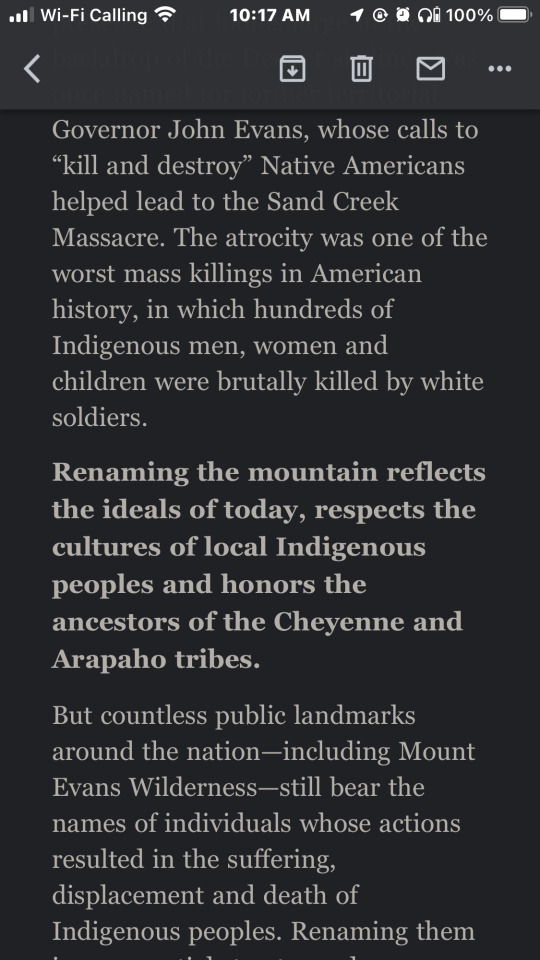

My apologies there’s something in the air that is preventing me from functioning and seeing clearly as my eyes are burning despite having just showered—so—
@a-captions-blog could you provide alt text for the screenshots, please?
To keep this short, please support Indigenous Americans today and even beyond today. I had more to say on this but my eyes are fucking suffering—
I had posted this 8 hours ago at 1:15 PM, it’s now 9:15 PM as I’m typing this, I know what I was going to say but I think it’s…needing some more searching before I disclose.
So..
I hope all Indigenous Americans had an awesome day today.
40 notes
·
View notes